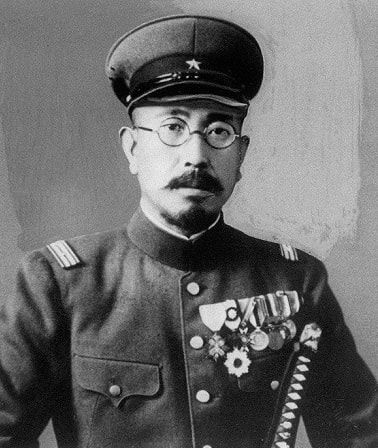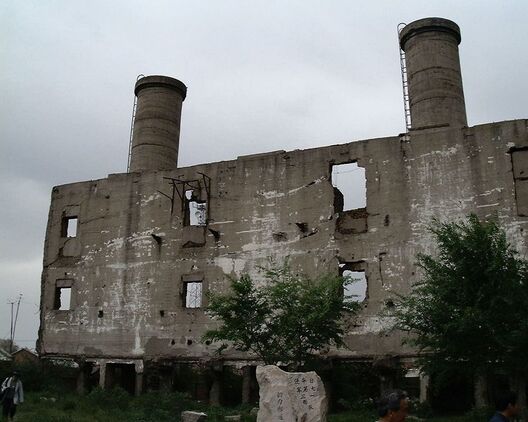- Home
- Stories
-
Internship
- Summer 2024 Internship
- Summer 2023 Internship
- Fall 2022 Internship
- Summer 2022 Internship
- Summer 2021 Internship
- Fall 2020- Spring 2021 Internship
- Summer 2020 Internship
- Fall 2019 Internship
- Summer 2019 Internship >
- School Year 2018-2019 Internship
- Summer 2018 Internship >
- Fall 2017 Internship
- Summer 2017 Internship >
- Books
- Archives
-
Resource Page
-
Supplementary Research Guides
>
- Unit 731 - Guide >
-
Philippines' Resistance - Guide
>
- Philippines World War II Timeline
- The Japanese Invasion & Conquest of the Philippines
- Bataan Death March
- Formation of Underground Philippines Resistance
- Supplies of the Guerrilla Fighters
- The Hukbalahap
- Hunter's ROTC
- Marking's Guerrillas
- United States Army Forces in the Philippines of Northern Luzon (USAFIP-NL)
- The Aetas
- Chinese and Filipino-Chinese Nationalist Guerrilla Units
- The Female Faces of the Philippine Guerrillas
- Rising Sun Flag - Guide >
- Pinay Guerrilleras - Guide >
- Fall of Singapore - Guide >
- Three Years and Eight Months - Guide >
- Siamese Sovereignty - Guide >
- The Khabarovsk War Crimes Trial - Guide >
- Unit 731 Cover-up : The Operation Paperclip of the East - Guide >
- Marutas of Unit 731 - Guide >
- Prince Konoe Memoir - Guide >
- Competing Empires in Burma - Guide >
- Battle of Shanghai - Guide >
- Ishi Shiro - Guide >
- Taiwan The Israel of the East - Guide >
- Seeking Justice for Biological Warfare Victims of Unit 731 - Guide >
- Rice and Revolution - Guide >
- Clash of Empires - Guide >
-
Hunger for Power and Self-SufficiencyI - Guide
>
- The Influence of War Rations on Post-War Culinary Transformations
- How World War II Complicated Food Scarcity and Invention
- American Military Innovations
- Government-Sponsored Food Inventions in Europe during World War II
- Feeding the Army: The Adaptation of Japanese Military Cuisine and Its Impact on the Philippines
- Mixed Dishes: Culinary Innovations Driven by Necessity and Food Scarcity
-
Denial A Quick Look of History of Comfort Women and Present Days’ Complication - Guide
>
- The Comfort Women System and the Fight for Recognition
- The Role of Activism and International Pressure
- The Controversy over Japanese History Textbooks
- The Sonyŏsang Statue and the Symbolism of Public Memorials
- Activism and Support from Japanese Citizens
- The Future of Comfort Women Memorials and Education
- Echoes of Empire: The Power of Japanese Propaganda - Guide >
- Lesson Plans >
-
Supplementary Research Guides
>
Early years
Born on June 25, 1892 to an established family in the village of Chiyoda-Mura in the Kamo District of Chiba Prefecture, Ishii Shiro was a product of his era. As a landowner, he lived a privileged childhood. His primary and secondary schoolmates remembered him as “brash, abrasive, and arrogant.” However, since he had a great memory, he was a “teachers’ favorite.” Raised in the age of Japanese expansionist ambition, Ishii had an ultra-nationalistic desire to be in the military. Less than a month after graduating from the Medical Department of Kyoto Imperial University at age 28, Ishii began his military training as a probation officer in the Third Regiment of the Imperial Guard Division and became a Surgeon-First Lieutenant in less than 6 months.
Surgeon General Shirō Ishii
He was able to successfully charm the President of Kyoto Imperial University, Araki Torasaburo. He even charmed his daughter, and was able to marry into the family to have a strong backing in medical science. Even with his busy home life, research work, and networking, he still frequented geisha houses and local bars. He eventually stumbled upon the report of the Geneva Protocol and the conference reports of Harada Toyoji and other military doctors and was impressed with the potential of chemical and biological warfare in future war strategy. During World War I, the German army’s use of chemical weapons inflicted heavy civilian casualties. Consequently, 44 countries passed an agreement at the 1925 Conference on Disarmament in Geneva on June 17, 1925 and signed an international protocol named “Protocol for the Prohibition of the Use in War of Asphyxiating, Poisonous or other Gases, and of Bacteriological Methods of Warfare” (“Geneva Protocol), prohibiting the use of chemical and biological weapons in war. Representatives from Japan were also present at this conference and were involved in drafting and signing the Geneva Protocol, although it was not ratified in Japan at the time.
World Travels
At the suggestion of his university mentor, Kiyano Kenji, he traveled to 25 Western countries in a span of two years starting from April 1928. It was rather usual for Japanese military members to visit the West to learn, similar to Kaneko’s experience. Some countries were more secretive about their research, but some, such as MIT were more open. After the visit, Ishii believed that Japan was behind and needed to engage in biological warfare research. Four months upon returning to Japan, Ishii Shiro became an instructor at the Imperial Japanese Army Medical School (IJA Medical School). Japan was a country which lacked mineral resources, which made biological weapons a brilliant choice since they were inexpensive and not very costly to produce or at least that was his argument. Moreover, there were the factors of transmission and the high lethality potential to consider
The ruins of a boiler building on the site of the bioweapon facility of Unit 731
As usual, Ishii was able to foster connections with others who could advance his career and caught the attention of Koizumi Chikahiko, an ultranationalist serving as Japan’s Minister of Health. With his support in August of 1932, an Epidemic Prevention Laboratory headed by Ishii Shiro was approved. However, at the time, the Imperial Japanese Army Medical School already had an Epidemic Prevention Laboratory. In Tokyo, Ishii experienced tremendous success with Koizumi’s support. He was able to secure a 1795 square meter complex at the Army Medical College. Since many of his peers were antagonized by him, he was greatly concerned about conducting research at Japan’s capital at the time. There was no way he could capture human experimental subjects for vaccine and defensive research work. The type of work which Ishii wanted to do needed to be done outside of Japan proper and the territory of Manchuria looked perfect. In the summer of 1932, after Ishii and his childhood friend, Masuda Tomosada, took a tour to Harbin, Ishii saw Manchuria as a perfect place for his scientific advancement.
Related Book
Marutas of Unit 731: Human Experimentation of the Forgotten Asian AuschwitzEuphemistically labeled as the "Water Supply and Prophylaxis Administration" and "HippoEpizootic Administration" of the Imperial Japanese Army, Unit 731 and Unit 100, as well as their subsidiary branches, performed human experimentation on the innocent under the leadership of Commanding Officer and Doctor Ishii Shiro. The Kempeitai (military police) captured the "lab rats" for Unit 731's prison. The prisoners included Chinese patriots, nearby civilians, Russians, and Allied prisoners of war. Although the exact number of victims is unclear due to Japan's attempts to liquidate evidence of their heinous crimes at the closing of the war, it is estimated to have ranged from 3,000-250,000 innocent men, women, and children. The cruel experiments and medical procedures were carried out by the brightest medical students, scientists, researchers, and staff that Imperial Japan had to offer.
To dehumanize prisoners in their minds, the scientists of Unit 731 called their test subjects "Marutas" or logs. Unit 731 faculty's observation of Marutas included their reaction to bubonic plague, typhoid, paratyphoid A and B, typhus, anthrax, smallpox, tularemia, infectious jaundice, gas gangrene, tetanus, cholera, dysentery, glanders, scarlet fever, undulant fever, tick encephalitis, "songo" or epidemic hemorrhagic fever, whooping cough, diphtheria, pneumonia, erysipelas, epidemic cerebrospinal meningitis, venereal diseases, tuberculosis, salmonella, frostbites, and many more deadly viruses, germs, and bacteria. To observe the real-time effects of these harmful agents, these prisoners were often subject to vivisections without the use of anesthesia. In the case where a human experimental subject was exhausted from the experiments, they were to be killed one way or another. Some test subjects were handed potassium cyanide tablets, while others ingested porridge with heroin. These "medical doctors" who performed routine human experiments were allowed to escape persecution, unlike their Nazi counterparts in Europe. This affair became infamously known as the elaborate American cover-up of war crimes, offering these perpetrators of crimes against humanity-- including Emperior Hirohito and Ishii Shiro--immunity in exchange for US access to Unit 731 research. Instead of punishment, many of these criminals were rewarded handsomely with great careers after the war, while thousands of Chinese families mourned their loved ones' lives which had lost at Unit 731 or dealt with the permeating consequences of sustaining a bacterial attack in their village. |
|
Pacific Atrocities Education
730 Commercial Street San Francisco, CA 94108 415-988-9889 |
Copyright © 2021 Pacific Atrocities Education.
We are a registered 501 (c)(3) charity. |
- Home
- Stories
-
Internship
- Summer 2024 Internship
- Summer 2023 Internship
- Fall 2022 Internship
- Summer 2022 Internship
- Summer 2021 Internship
- Fall 2020- Spring 2021 Internship
- Summer 2020 Internship
- Fall 2019 Internship
- Summer 2019 Internship >
- School Year 2018-2019 Internship
- Summer 2018 Internship >
- Fall 2017 Internship
- Summer 2017 Internship >
- Books
- Archives
-
Resource Page
-
Supplementary Research Guides
>
- Unit 731 - Guide >
-
Philippines' Resistance - Guide
>
- Philippines World War II Timeline
- The Japanese Invasion & Conquest of the Philippines
- Bataan Death March
- Formation of Underground Philippines Resistance
- Supplies of the Guerrilla Fighters
- The Hukbalahap
- Hunter's ROTC
- Marking's Guerrillas
- United States Army Forces in the Philippines of Northern Luzon (USAFIP-NL)
- The Aetas
- Chinese and Filipino-Chinese Nationalist Guerrilla Units
- The Female Faces of the Philippine Guerrillas
- Rising Sun Flag - Guide >
- Pinay Guerrilleras - Guide >
- Fall of Singapore - Guide >
- Three Years and Eight Months - Guide >
- Siamese Sovereignty - Guide >
- The Khabarovsk War Crimes Trial - Guide >
- Unit 731 Cover-up : The Operation Paperclip of the East - Guide >
- Marutas of Unit 731 - Guide >
- Prince Konoe Memoir - Guide >
- Competing Empires in Burma - Guide >
- Battle of Shanghai - Guide >
- Ishi Shiro - Guide >
- Taiwan The Israel of the East - Guide >
- Seeking Justice for Biological Warfare Victims of Unit 731 - Guide >
- Rice and Revolution - Guide >
- Clash of Empires - Guide >
-
Hunger for Power and Self-SufficiencyI - Guide
>
- The Influence of War Rations on Post-War Culinary Transformations
- How World War II Complicated Food Scarcity and Invention
- American Military Innovations
- Government-Sponsored Food Inventions in Europe during World War II
- Feeding the Army: The Adaptation of Japanese Military Cuisine and Its Impact on the Philippines
- Mixed Dishes: Culinary Innovations Driven by Necessity and Food Scarcity
-
Denial A Quick Look of History of Comfort Women and Present Days’ Complication - Guide
>
- The Comfort Women System and the Fight for Recognition
- The Role of Activism and International Pressure
- The Controversy over Japanese History Textbooks
- The Sonyŏsang Statue and the Symbolism of Public Memorials
- Activism and Support from Japanese Citizens
- The Future of Comfort Women Memorials and Education
- Echoes of Empire: The Power of Japanese Propaganda - Guide >
- Lesson Plans >
-
Supplementary Research Guides
>


